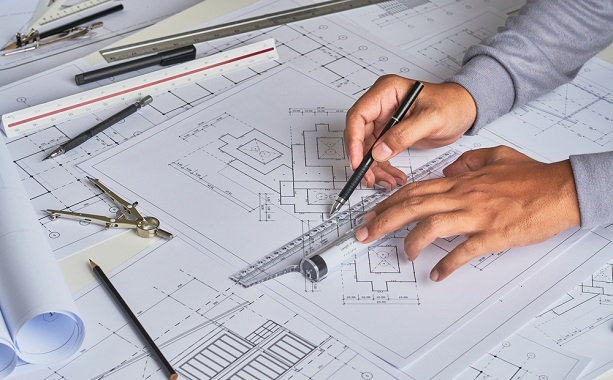Conservation architect
Conservation architects are tasked with restoring and protecting buildings of historical significance — castles, cathedrals, palaces, and even residential properties with historical interest. They must have an in-depth knowledge of how to maintain buildings and an awareness of the restrictions placed on listed buildings they must work within. Conservation architects can respect the period architecture while still providing functionalities expected in modern living. Preserving the beauty and craftsmanship of historic buildings means they can be enjoyed for generations to come.
Landscape architect
If you love outdoor spaces, becoming a landscape architect could be the role for you. They specialise in designing and developing outdoor spaces like golf courses, parks, and public gardens. Landscape architects must consider the layout of pathways and have expertise in horticulture. This means deciding what types of flowers, plants, trees, and other greenery should be used.
Interior architect
It’s important not to confuse an interior architect with an interior designer. An architect focuses on structural design and materials. They need a good understanding of design knowledge, such as colour theory, to convert a blank space into a habitable environment that perfectly balances beauty and practicality.
How long does it take to become an architect?
The most common (and quickest) way is to do an architecture degree at university, which takes seven years — five years of study and two years of practical experience. Architectural apprenticeships are another entry method for a career in architecture. There are two apprenticeship routes — Level 6 Architectural Assistant, including Part 1 qualification and the Level 7 Architect, including Part 2 and Part 3 qualifications. You will need to do both schemes to be able to register with the Architects Registration Board (ARB) and become a fully-fledged architect.
Each scheme takes four years to complete and combines practical experience with academic training from a university. The main benefit is that you’ll earn a salary and won’t pay for your academic tuition.
What qualifications do you need to become an architect?
Due to the competitive and academic nature of the architecture course, grade requirements are high. Different institutions have different UCAS points requirements, but more artistic subjects can be helpful, particularly for demonstrating technical drawing skills. Maths, science and design & technology are also good options. To get on an architecture course, you will usually need:
● at least 5 GCSEs at grades A* to C or equivalent, including English, maths and a science
● 2 (usually 3) A levels in relevant subjects.
How to become an architect without a degree
It isn’t possible to become a licensed architect in the UK without getting a degree. To become a qualified architect, you must complete an apprenticeship, education program or RIBA course.
However, you can still use free online learning tools to develop your knowledge. Online courses are taught by industry professionals with hands-on experience in the field, giving you valuable insights and industry-relevant guidance. This enables you to pursue your architectural aspirations, and you can still put your learning into practice as a building designer with a qualified architect by your side.





